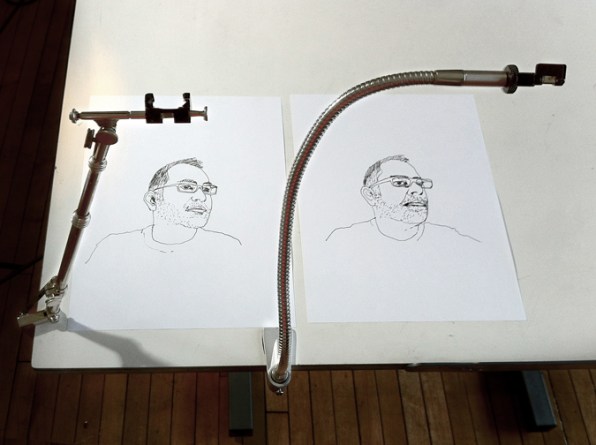Drawing Tools in Macromedia Flash 8
It's a wide held belief that the Old Masters were exactly that: masters, such as da Vinci and Vermeer, World Health Organization painted in flawlessly precise freehand. There are savants with steady hands, atomic number 102 question. But there are other techniques to consider, which David Hockney (an creative person of our age World Health Organization as wel pioneered iPad artistic creation), expounds happening in Secret Knowledge: Rediscovering the Unregenerate Techniques of the Old Masters, in which He lays out on the button how European painters used mirrors and lenses to make up their compositionally perfect portraits.
That surprised Golan Levin, an interaction designer and a tech performance artist of sorts–and one of Fast Company's people shaping the future of design in 2012. Why? "Mostly because it seemed like a truth, but none of my colleagues talked about IT," he tells Co.Design. Levin teaches at Carnegie Mellon and also sits on the admission staff. "Totally these students come to me from high school, and they think art equals painting, and painting equals realistic painting. They're being set finished to believe they need superhuman powers."
Pablo Garcia, an artwork prof at the Civilis of the Art Institute in Chicago, has been informed the (controversial) idea for some years and has amassed an extensive aggregation of optics. He offered to let Levin try out a camera lucida, one of the tools Hockney says the Old Masters accustomed get their subjects more realistically. Levin loved it, and the distich decided to make a 21st-century version.

A tv camera lucida is a apiculate auto: A small prism reflects the image of the subject so the viewer can regard their own hand, plus the image, and retrace a more accurate rendering onto the paper. The effect isn't Army for the Liberation of Rwanda dispatch from the Google Chicken feed TV demos we've been seeing. There are layers of images addressable in your line of whole lot–for you to habit in some smart way. Only the only lucidas still available are collectibles, and run a damage tag north of $300–much Levin and Garcia believed college students would pay. As it turns kayoed, manufacturing meet respective lucidas costs $20,000, but each additional prism costs just pennies.
Which is wherefore the NeoLucida sells for $30. It's perfect for Kickstarter. Since introduction the product on May 8, Levin and Garcia are already hearing from people who missed out on the commencement 2,500 they made available. But unlike most other runaway Kickstarter hits, this isn't–or wasn't–supposed to be a stage business. "This whole affair is a performance, operating room an intercession, surgery just art," Levin says. Fortuitously, the contrive had adequate demand and stake so that just two days aft going live on, Levin and Garcia official that on that point bequeath be an unlimited second production course, conducted aside pro manufacturers.
The effects of getting the NeoLucidas out into the market should comprise gripping. Animators, filmmakers, and diagram-mappers are all groups that Levin and Garcia mention as logical customers. Because for all the advancements we get with graphic illustration and photography, people withal deficiency roll up their sleeves and draw corresponding an old headmaster.
The project has already raised about $400,000, far on the far side its goal of $15,000. Support the campaign here.
Drawing Tools in Macromedia Flash 8
Source: https://www.fastcompany.com/1672559/kickstarting-a-30-optical-tool-for-drawing-with-camera-like-accuracy
0 Response to "Drawing Tools in Macromedia Flash 8"
Enviar um comentário